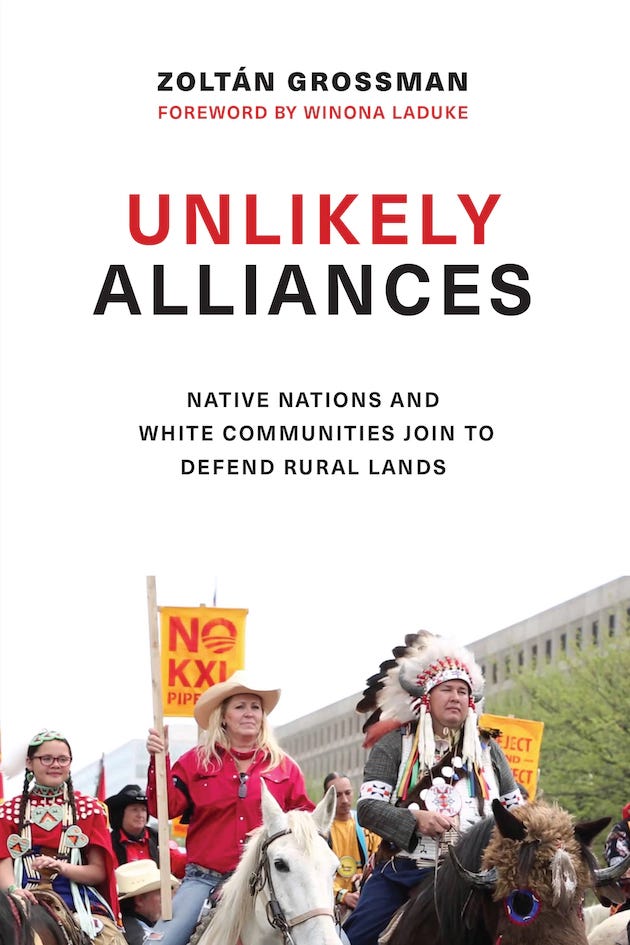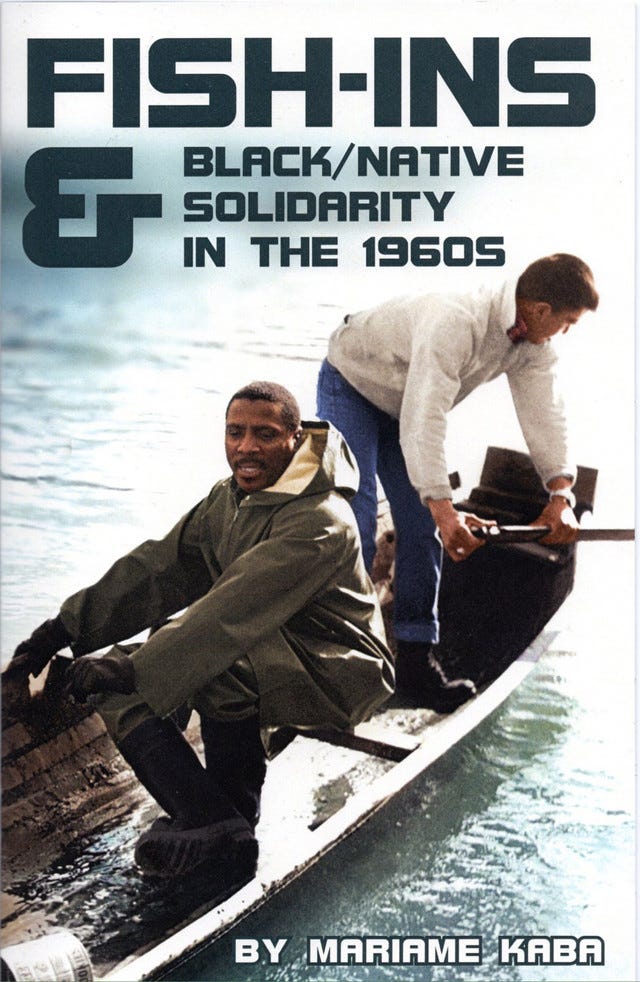Fishing in Solidarity
On unexpected support for treaty rights, and the Boldt decision's 50th anniversary
It’s the last day of January. How did we get here so fast? Yet here we are, fully launched into this year, one whole month down.
This particular January happened to mark the 50th anniversary of a major legal decision that continues to have tremendous importance for both Indigenous sovereignty and the very idea of "usufructuary" or use rights — the right to use land even if one is not in possession to a deed (a subject we’ve visited before, such as this essay on “the right to roam”).
The legal decision I’m referring to is the Boldt decision, which affirmed the treaty rights to fish for tribes in Washington State. The decision was the result of U.S. v. Washington, a case brought by tribes who had found themselves cut off from their ancestral fishing grounds as settler fishing operations moved in and local regulations often specifically closed off fishing grounds to tribal members and outlawed their traditional methods for fishing.
Legal suits based on treaty rights to fish were brought as early as the 1950s, but it was only after decades of activism that the Boldt decision came about. “Fish-ins,” much like the sit-ins of the Black Civil Rights Movement, drew violent responses from both police and non-Native fishing communities which, caught on video and shared on the nightly news, changed public consciousness about the issue.
Boldt affirmed not just a right to fish but a right of tribes to 50% of the harvest; at the time they’d been receiving maybe 3%, while commercial fishing was taking close to 90%. In later phases of the case, what is sometimes called Boldt II, this right to harvest was complimented by further rulings on the obligation of the state to protect fish habitat (as there’s no guarantee to harvest if there’s no suitable habitat in which that harvest may grow). This helped set up tribes to utilize their treaty rights to block many kinds of harmful development that might harm salmon populations, which they have done, and required the state to make improvements that will protect fish runs, such as removing culverts that block fish from migrating.
The Boldt decisions are a great subject for study if you want to begin understanding the ramifications of truly upholding treaty obligations. One way to get going is through the series of pieces put together for the 50th anniversary by The Seattle Times, including:
An excerpt from Treaty Justice: The Northwest Tribes, the Boldt Decision, and the Recognition of Fishing Rights, by legal historian Charles Wilkinson;
A video featuring original footage from the fish-ins, and narrated in part by tribal elders who took part in the movement for fishing rights; and
A timeline placing some of the events pertaining to Boldt in the context of other major historical events and movements.
Through my own attempt to read a little more about the fish-ins, I found out that they’re also a good way to learn about the possibilities for cross-racial solidarity. You can see some of that in the first chapter of Unlikely Alliances: Native Nations and White Communities Join to Defend Rural Lands, in which Zoltán Grossman tells the story of the fish-ins and the legal decision but does so with a focus on the ongoing anti-treaty backlash that occurred, and the eventual relaxing of antagonisms between some groups representing non-Indian sportfishers and treaty and fishing rights activists. Relationships were slowly built over time between groups like Trout Unlimited and movement leaders like Billy Frank Jr., and these relationships helped keep the anti-treaty rights efforts from gaining greater strength. Grossman also suggests that Boldt helped set the groundwork for the type of co-management arrangements between state and tribal agencies over fish runs and hatcheries that we see today.

Before all that, though, other lines of solidarity were being forged during the acts of civil disobedience that sparked the Boldt decision in the first place. That’s the subject of the zine Fish-Ins & Black/Native Solidarity in the 1960s, by well-known abolitionist Mariame Kaba.
The zine features artwork by illustrator Jon Bailiff capturing moments from the fish-ins, but its focus is on the interaction between the civil rights movement and those working for treaty rights. Kaba has particular interest in performer and activist Dick Gregory, who joined a fish-in after performing a comedy set in Seattle in early 1966. He was arrested and served 90 days in jail as a result, where he also went on a hunger strike that brought further attention to the cause of fishing rights.
Kaba did an interview over at the site Capital B where she talks about why this story about Gregory caught her attention and how she thinks it can serve as a model for multiracial organizing today. You can pick up a copy of the zine from the publisher, Half Letter Press.
The Boldt decision continues to play out today, and not just for the tribes involved in the case. One outcome after Boldt was the creation of Northwest Indian Fisheries Commission, whose restoration work arguably impacts everyone in the region. You can learn about their efforts in their online magazine: https://nwtreatytribes.org/publications/magazine/
I’m guessing that’s plenty of links and recommendations for one post, and we’re getting precipitously close to February before I’ve managed to finish this. Thanks for reading! More soon.
Until next time,
Meg




